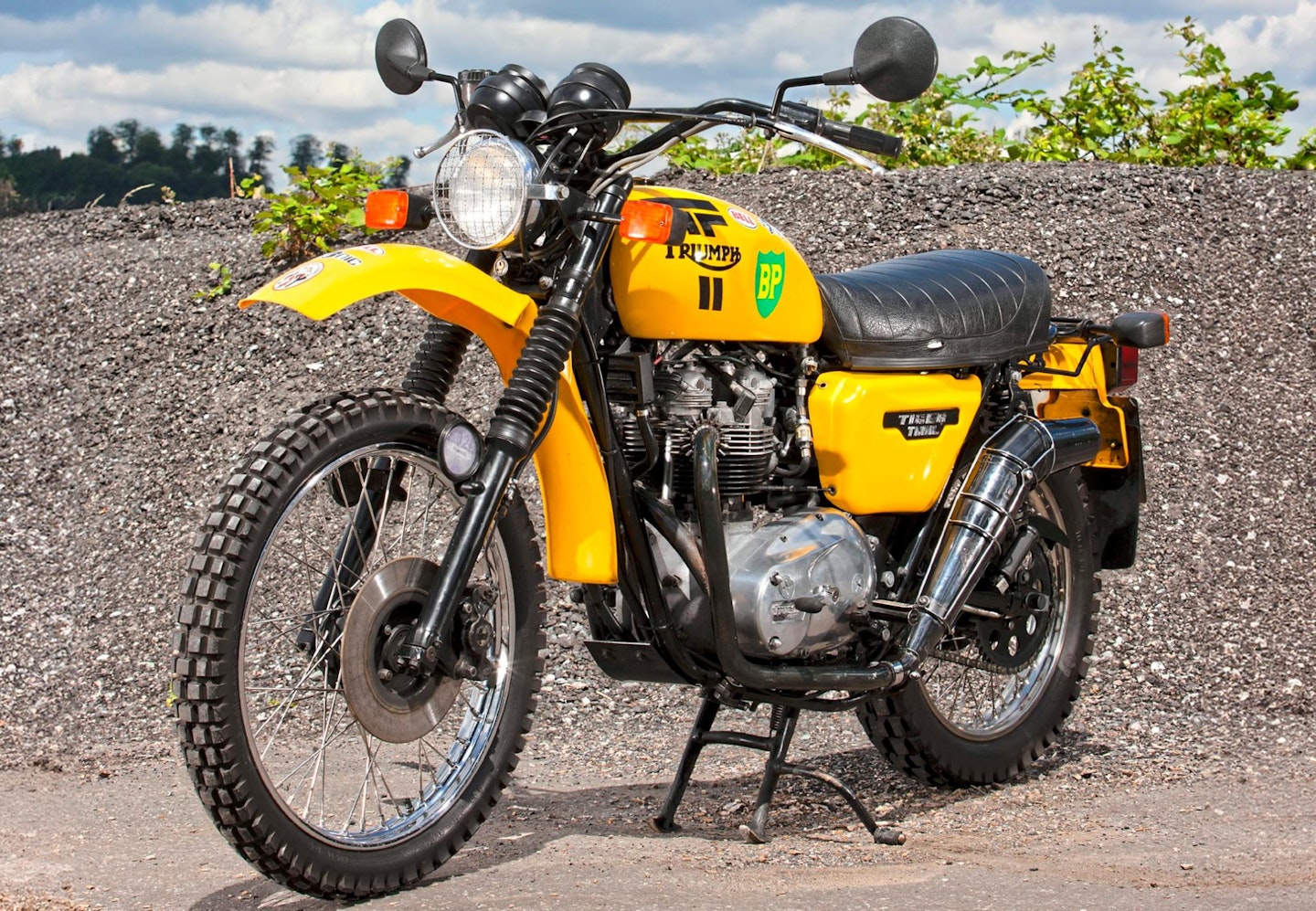[ Ahead of its time ]

BMW weren’t the only manufacturer to understand what an adventure bike was before they became a thing. A floundering British firm were on the ball, too…

Trust the old British motorcycle industry to poke its toe into a potentially vast market at just the right moment then run out of money and go into receivership two years after the event. The 1981 Triumph TR7T (Tiger Trail) was cobbled together after desperate French Triumph dealers pleaded for something they could punt to rival the 1980 BMW R80G/S – and the Meriden Workers’ Co ‐operative (as Triumph became in 1977) excelled themselves.
They knocked the TR7T together from their own parts bins and European-supplied cycle parts in a few months. Frame was the usual central spine oil-bearing affair, engine was a mildly detuned 744cc Tiger unit. The 21in front wheel and a pair of Marzocchi shocks were the major chassis mods for dual-purpose credibility. And it worked.
At 185kg wet, with 40bhp and 34 lb.ft, it was nippy enough for the time while the R80G/S weighed the same and boasted 50bhp. The GS, let’s not forget, was essentially an R80/7 engine in an R65 frame with a 21in front wheel. These were the only twin-cylinder trail bikes larger than 500cc available, and both from manufacturers with rich histories in big, twin-pot trailies. The problem for the Co-op was that BMW could crank their GS production up at will, while the Meriden factory was operating on a lamentably hand-to-mouth basis.
They barely had the funds to pay Marzocchi for the shocks, German firm Bumm for the mirrors, Radaelli for the steel wheel rims… and ended up making just 165 Tiger Trails.
The TR7T proved a decent competition tool; a Tiger Trail won the 750cc and above class in the 1981 Rallye des Pyrénées – beating BMW’s R80G/S to the trophy. Yet where Triumph posted that minor win, BMW brought home the big prize with a Paris-Dakar victory in 1981 (repeating the feat in ’83, ’84 and ’85). Face it: a Meriden-era twin would not be first choice for anyone planning to even reach Dakar, let alone win a Paris-Dakar. Globetrotter Ted Simon bravely employed a Triumph twin to circle the world via some fairly inhospitable environments, but he was not racing a relic with its roots in a 1937 design, merely hoping to visit his next destination without recourse to the tool roll.
The TR7T cost £1800 in 1981; the R80G/S was £2300. Both are now comfortably around the £10,000 mark if you can find a decent example. The G/S went on to become something of an institution, and the modern Triumph range boasts some impressive big trailies in a market that is now huge compared to what it was more than 40 years ago. The 1981 TR7T blazed that trail.
Mark Graham

